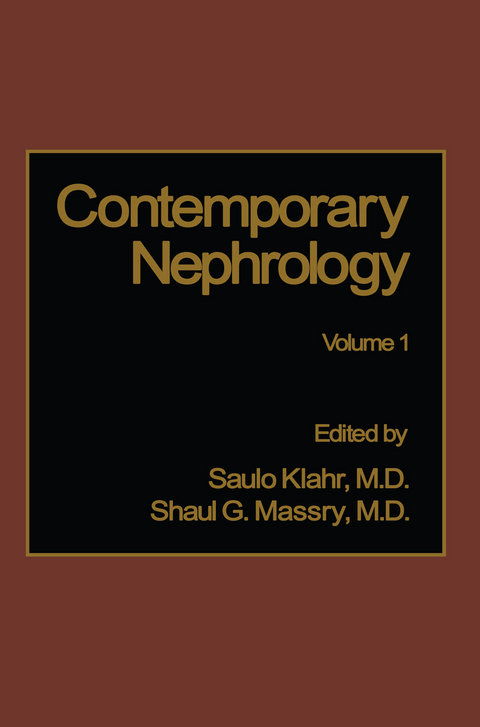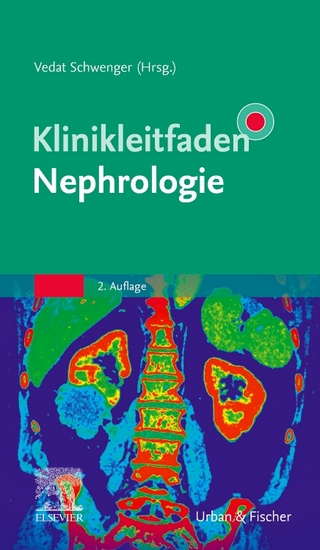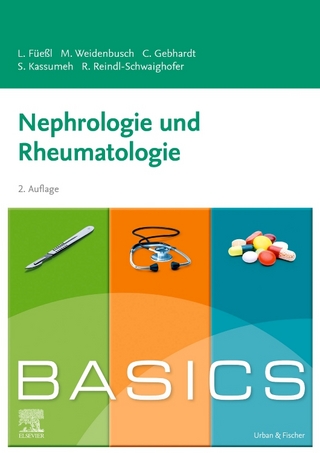
Contemporary Nephrology
Springer-Verlag New York Inc.
978-1-4615-6721-9 (ISBN)
This group of chapters includes Acid-Base Physiology and Pathophysiology (Arruda and Kurtzman); Mineral Metabolism in Health and Disease (Agus, Goldfarb, and Was- serstein); Hypertension and the Renin-Angiotensin-Aldosterone Axis (Williams and Hollenberg); Immunologically Mediated Renal Disease (Glassock); Acute Renal Failure and Toxic Nephropathy (Anderson and Gross); and the Kidney in Systemic Disease (Martinez-Maldonado). The last five chapters, which are more clinically oriented, include Uremia (Friedman and Lundin); Nutrition in Renal Disease (Mitch); Dialysis (Maher); Renal Transplantation (Strom); and, finally, Drugs and the Kidney (Bennett).
1 Membrane Transport.- 1. Introduction.- 2. General Aspects of Epithelial Organization Related to Nephron Function.- 3. Correlations between Function and Morphology in the Nephron.- 4. Isolation, Characterization, and Reconstitution of Membrane Transport Systems.- 5. Conclusions.- References.- 2 Renal Physiology: Renal Circulation, Glomerular Filtration, and Renal Handling of Sodium, Potassium, and Chloride.- 1. Renal Hemodynamics and Glomerular Filtration Rate.- 2. Renal Handling of Sodium Chloride.- 3. Potassium Transport.- References.- 3 Renal Metabolism.- 1. Introduction.- 2. Methodological Considerations.- 3. Biochemistry of the Glomerulus.- 4. Biochemistry of Tubular Membranes.- 5. Intermediary Metabolism and Regulation.- References.- 4 Renal Prostaglandins.- 1. Introduction.- 2. Prostaglandin Synthesis and Degradation.- 3. Prostaglandins, Sodium Excretion, and Diuretics.- 4. Prostaglandins, Vasopressin, and Water Excretion.- 5. Prostaglandins and Renin Release by the Kidney.- 6. Renal Blood Flow.- 7. Bartter’s Syndrome.- 8. Ureteral Obstruction.- 9. Deleterious Clinical Effects of Nonsteroidal Antiinflammatory Drugs.- 10. Future Directions.- References.- 5 Acid-Base Physiology and Pathophysiology.- 1. Introduction.- 2. Proximal Tubular Acidification.- 3. Mechanism of Bicarbonate Reabsorption.- 4. Factors that Control Bicarbonate Reabsorption.- 5. Effect of Calcium on Urinary Acidification.- 6. Role of Vitamin D in Urinary Acidification.- 7. Effects of Pharmacological Agents on Bicarbonate Transport.- 8. Proximal Renal Tubular Acidosis.- 9. Hyperparathyroidism and Proximal Renal Tubular Acidosis.- 10. Distal Urinary Acidification.- 11. Studies in the Turtle Bladder.- 12. Effect of in Vivo Acid-Base Status on in Vitro Acidification.- 13. Metabolic Regulation ofUrinary Acidification.- 14. Effect of Aldosterone on Urinary Acidification.- 15. Bicarbonate Exit.- 16. Role of Calcium, Magnesium, and Cyclic AMP in Acidification.- 17. Comparative Physiology of the Turtle Bladder and Mammalian Cortical Collecting Tubule.- 18. Distal Renal Tubular Acidosis Syndromes.- 19. Factors Responsible for Generation of a High Urinary CO2 Tension.- 20. Experimental Models of Distal Renal Tubular Acidosis.- 21. Human Distal Renal Tubular Acidosis.- 22. Role of Potassium Depletion in Acid-Base Homeostasis.- 23. Other Forms of Impaired Distal Acidification.- 24. Extrarenal Factors that Influence Acid-Base Homeostasis.- 25. The Role of the Gut in the Pathogenesis of the Hyperchloremic Acidosis of Ureterointestinal Anastomosis.- References.- 6 Mineral Metabolism in Health and Disease.- 1. Vitamin D.- 2. Parathyroid Hormone and Calcitonin.- 3. Calcium Physiology and Pathophysiology.- 4. Phosphate Physiology and Pathophysiology.- 5. Renal Osteodystrophy.- 6. Nephrolithiasis.- References.- 7 Hypertension and the Renin-Angiotensin-Aldosterone Axis.- 1. Introduction.- 2. Physiology and Pharmacology.- 3. Hypertension.- References.- 8 Immunologically Mediated Renal Disease.- 1. Introduction.- 2. Basic Investigations.- 3. Clinical Investigations.- References.- 9 Acute Renal Failure and Toxic Nephropathy.- 1. Introduction.- 2. Pathophysiological Considerations.- 3. Clinical Considerations.- 4. Summary and Conclusion.- References.- 10 The Kidney in Systemic Disease: Pathophysiological Schemes and Analysis of Two Diseases (Multiple Myeloma and Diabetes Mellitus).- 1. Introduction.- 2. Reduction in Glomerular Filtration Rate in Systemic Illness.- 3. Alterations in Proximal-Tubular Function.- 4. Other Consequences of Proximal-Tubular Defects.- 5. Diminished SaltTransport in the Thick Ascending Limb of the Loop of Henle.- 6. Multiple Myeloma.- 7. Diabetes Mellitus.- References.- 11 Uremia.- 1. Introduction.- 2. Uremic Toxicity.- 3. Uremic Osteodystrophy.- 4. Cardiovascular Complications.- 5. Anemia.- 6. Disturbances of the Gastrointestinal Tract.- 7. Hormonal and Lipid Abnormalities.- 8. Immune Defects of Uremia.- 9. Psychological Impact of Renal Failure.- 10. Alternative Therapy of Uremia.- References.- 12 Nutrition in Renal Disease.- 1. Introduction.- 2. Nitrogen Metabolism.- 3. Glucose and Insulin Metabolism.- 4. Lipid Metabolism.- 5. Therapeutic Considerations.- 6. Chronic Renal Failure in Children.- 7. Acute Renal Failure.- References.- 13 Dialysis.- 1. Introduction.- 2. Overview.- 3. Vascular Access.- 4. Extracorporeal Devices.- 5. Peritoneal Dialysis.- 6. Problems and Complications of Dialysis.- 7. Removal of Drugs and Poisons by Dialysis or Hemoperfusion.- 8. Unusual Indications for Dialysis or Hemoperfusion.- References.- 14 Renal Transplantation.- 1. Clinical Transplantation.- 2. Clinical Immunology.- 3. Conclusion.- References.- 15 Drugs and the Kidney.- 1. Introduction.- 2. Basic Pharmacokinetics.- 3. Drug Handling by the Kidney.- 4. Clinical Use of Drugs in Renal Failure.- 5. Effects of Hemodialysis, Hemoperfusion, and Peritoneal Dialysis on Drug Pharmacokinetics.- References.
| Erscheint lt. Verlag | 5.9.2012 |
|---|---|
| Zusatzinfo | 26 Illustrations, black and white; XX, 715 p. 26 illus. |
| Verlagsort | New York, NY |
| Sprache | englisch |
| Maße | 152 x 229 mm |
| Themenwelt | Medizinische Fachgebiete ► Innere Medizin ► Nephrologie |
| ISBN-10 | 1-4615-6721-1 / 1461567211 |
| ISBN-13 | 978-1-4615-6721-9 / 9781461567219 |
| Zustand | Neuware |
| Haben Sie eine Frage zum Produkt? |
aus dem Bereich


